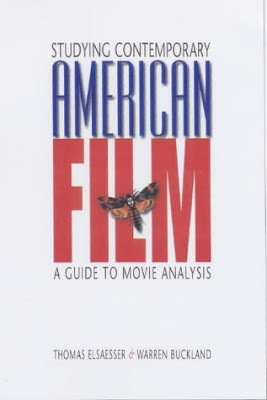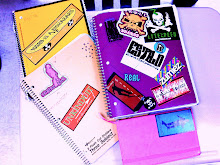Global" read and outline p. 94-99. STUDY, YOU WILL HAVE A QUIZ ON THIS TOMORROW.
GOLDEN AGES TEST NEXT TUESDAY.
Dynastic China
Shang Dynasty 1650 - 1027 BCE The Shang Dynasty is considered to be the earliest
dynasty in China. Little is known about the Shang, other than their major contribution to Chinese
culture, a system of writing. The Chinese system of writing includes tens of thousands of characters, and is very difficult to learn. This resulted in on a very privileged few ever learning to read and write in ancient Chinese society.
The ancient Chinese system of writing used
pictographs, or drawings of objects, and
ideographs, or drawings that expressed a thought or idea. Examples of this type of writing can be found on oracle bones. Oracle bones are pieces of bone of turtle shell used by Shang priests to tell the future. They would write a question addressed to either one of the gods, or an ancestor on the bone, then heat it until it cracked. They believed that by studying the pattern of cracks, one could learn the answer to the question. Oracle bones are the oldest example of Chinese writing.
Zhou Dynasty 1027-256 BCE The Zhou overthrew the Shang and setup their own dynasty in 1027 BCE. They explained their actions by claiming the Mandate of Heaven, or
divine right of rule. The Mandate of Heaven was later used to explain the
Dynastic Cycle. A dynasty would remain in power only as long as it was providing good
government. When a dynasty went into decline, and began to abuse its power, it was said to lose the Mandate of Heaven, or the favor of the gods. A strong leader would usually emerge to claim the Mandate, and establish a new dynasty.
The dynastic cycle would then begin again.
Under the Zhou, the Chinese discovered how to make silk from the cocoons of silkworms. Silk would become China’s most valuable export, eventually linking them with most of the world through
trade. Chinese
artisans also excelled in book making. The first books were made by binding together long, thin strips of wood or bamboo. Chinese
scholars would then carefully paint characters on with brush and ink. Early book include the I Ching, a book for diviners, or fortune tellers, and the Book of Songs, which includes a poetry describing a variety of Chinese life.
Han Dynasty 206 BCE – 220 CE China enjoyed a true
golden age under the Han. Many cultural and intellectual achievements came as a result of the strong leadership of the Emperor Wudi. Under Wudi, China strengthened both its government and economy, setting the conditions for the golden age. This included a period of expansion that saw the opening of the
Silk Road as a major trade route. Trade along the Silk Road brought China in contact with other
civilizations, and introduced new products such as cucumbers and grapes.
Under the Hans,
Confucianism became the official belief system of China. They also setup a
Civil Service Exam based on Confucianism. This exam was required to enter service in the government. The Confucian system of government was used in China for most of the last 2000 years.
Han scientists wrote textbooks on subjects ranging from
zoology to
botany and
chemistry. They were advanced
astronomers, which enabled them to create more accurate clocks. Han scientist also invented the process to make paper from wood pulp; they invented the rudder for use on ships, and created other such useful devices as the fishing reel and the wheelbarrow.
Han physicians developed
acupuncture to alleviate pain and to treat various illnesses. They also made use of certain plants as herbal remedies. They were able to diagnose and successfully treat various illnesses with these techniques.
Han artists and
architects are noted for their detailed carvings in jade, wood, or ivory, and the building of elaborate temples. The also refined the process of silk making, which set the standard in China for centuries.
Tang Dynasty 618 – 907 After a period of
civil war and decline in China, the Tang reestablished a unified government. Tang
emperors expanded their influence into Central and Southeast Asia, demanding tribute from such places as Korea and Vietnam. They redistributed land to the peasants and reintroduced the use of Confucian scholars in running the government. Tang emperors also established a law code, and renovated the canal system to encourage trade and communication inside of China.
Under the Tang, a
strict social structure was developed. This system consisted of three main social classes, which included the
gentry, the
peasantry, and the
merchants. Each class had its own rights and duties, and social mobility was possible from one class to another.
Tang scientists invented
gunpowder in the 9th Century by combining saltpeter, sulfur, and charcoal. They began using block printing in the 8th Century. Block printing is a system of printing where characters are carved onto a wooden block. The block is then inked and pressed onto a sheet of paper. Other inventions include mechanical clocks that kept very accurate time.
Tang physicians developed a small pox
vaccine in the 10th century. However, the widespread use of this vaccine did not occur in China until the 16th century. This idea eventually spread west, and was introduced in Europe in the 1600’s.
Song Dynasty 960 – 1279 After the decline of the Tang Dynasty, China experienced a short period of general chaos, with no strong, central government. In 960 CE, the first Song Emperor reunited most of China. The Chinese
Empire under the Song was smaller than the Empire of the Tang, but Chinese culture was still dominate in most of eastern Asia.
Under the Song, China began rice cultivation. China was able to plant two rice crops a year, giving them an abundance of food. The result of this was the ability to pursue other interests, such as art and literature. The Song also maintained extensive trade with the India, Persia, and the Middle East.
Song artisans were known for their fine
porcelain, and the use of calligraphy, a form of fine handwriting. Along with the Tang, they are known for stunning landscape paintings. Architects designed the pagoda, which is a multistoried building with the corners of the roof curved up that were used as temples.
Under the Song, the Chinese invented
movable type printing machines. This idea spread to Korea and Japan, and may have also been spread to Europe by Mongol armies. The use of movable type allowed for faster printing, and the widespread diffusion of ideas. Other inventions include the spinning wheel, which is a machine used to make thread.
Ming Dynasty 1368 ACE – 1644 After almost one hundred years of foreign rule by the Mongols, the Ming seized power and setup their own dynasty in 1368 CE. The Ming restored Confucian government and
traditions to China. They experienced an economic revival due to great achievements in agricultural production through better farming methods. During the 1500’s, new crops brought over from the Americas, such as corn and sweet potatoes helped to increase food production. This resulted in over 100 million people in China during this time.
Ming industry thrived producing large amounts of porcelain, paper, and tools. The canal system was renovated to increase trade and communication within China. New methods of printing led to an abundance of books, and an increase in the literacy rate.
Under the Ming, some artisans produced prized blue and white porcelain vases, while others began a revival of landscape painting. Confucian poetry also experienced a revival, and the first detective stories began to circulate among the Chinese people. Chinese artists also excelled in opera and drama.
Voyages of Zheng He 1405 – 1433 Zheng He was a Chinese explorer that sailed along the coasts of S.E. Asia, India, and East Africa during the 15th century. The Chinese established trade in these areas and spread their culture to the west. However, after Zheng He’s death in 1433, the Ming Emperor ordered all voyages stopped and trade with the outside world cut off. This was done to keep China free from foreign influence. However, this action limited China’s development and made them an easy target for the more advanced Europeans in the coming years.






 Global: Study all your notes about Mycenaean civilization, Minoans, Athens and Sparta.
Global: Study all your notes about Mycenaean civilization, Minoans, Athens and Sparta. ATHENIAN SOLDIER COMBAT READY
ATHENIAN SOLDIER COMBAT READY









